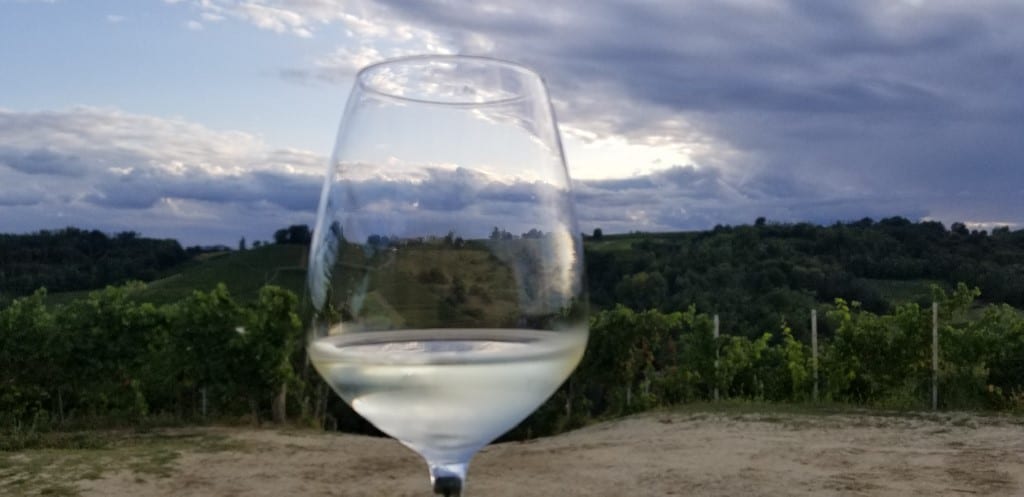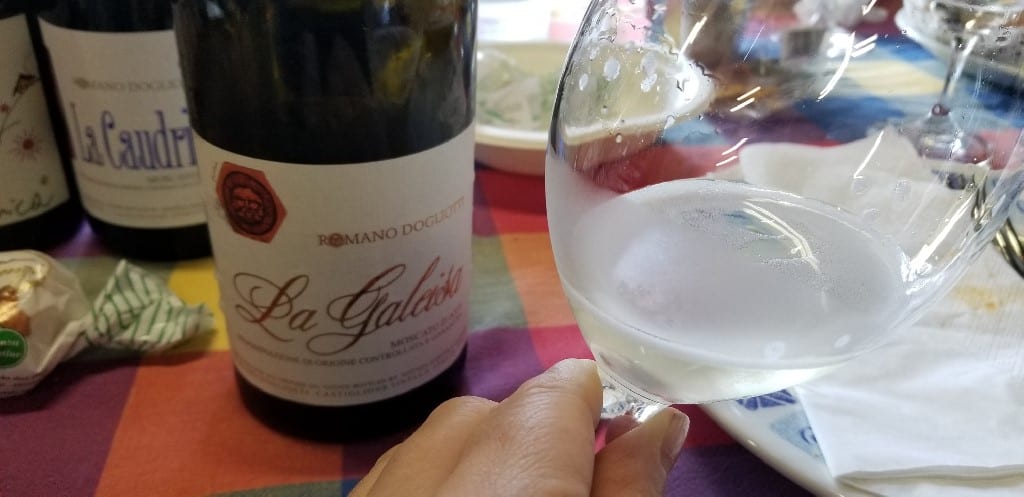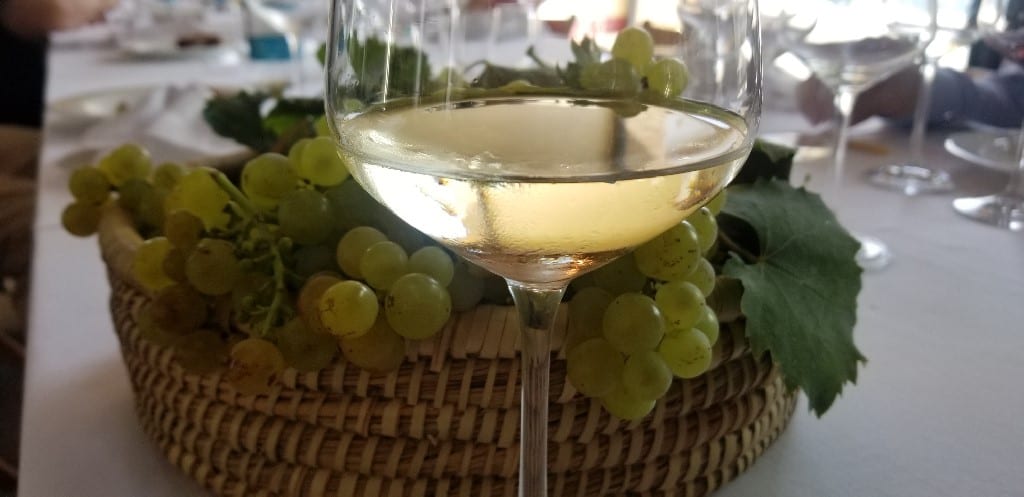
16 Jan Moscato d’Asti – Spring in a Glass
It’s fun! It’s flirty! It’s sweet yet balanced with acidity! It’s delicious! It’s Moscato d’Asti. I had the the pleasure to recently spend a week in Asti in Piemonte, Italy, visiting wineries and drinking lots and lots of Moscato d’Asti. This light and refreshing wine will transport you to a spring picnic in the park. But Moscato d’Asti, a wine made from passion, also has a serious side and I wrote about this wonderful wine in the Napa Valley Register which I am sharing here.
Rainy, cold weather getting you down? Longing for spring to come? Open up a bottle of Moscato d’Asti and transport yourself to a picnic in the spring. No matter the time of the year, no matter the temperature outside, Moscato d’Asti is fresh and is like spring in a glass.
Now, your first thought might be, “but Moscato d’Asti is a sweet wine.” It is OK to admit you like a little sweetness in your wine. When a little residual sugar is balanced by bright acidity, there is nothing not to like. And Moscato d’Asti is just that. It is fun, fruity, light and refreshing but it is also a serious wine with a lot of care is put into making it.
The first written records of the Moscato Bianco grape in Piemonte, Italy were in the 1300s. Today there are 10,000 hectares planted, of which 1,400 hectares are planted on hills, across 52 municipalities in the provinces of Alessandria, Asti and Cuneo in Piemonte.
Ten years ago, no more than 2 million bottles were exported from Italy. Today, there are 18 million bottles exported to the U.S.. As 67 percent of Moscato d’Asti consumption is in the United States, we must already know that it is delicious!
The world’s most popular sweet aromatic wine, Moscato is a regulated product. It is overseen by the Consorzio per la Tutela dell’Asti (Consortium for the Protection of Asti Wines). Founded in 1932 and recognized in 1934, the Consorzio has 1109 members. Of the members, there are 1,023 estates (including 116 estate wineries), 17 must producers, 16 cooperative wineries and 53 spumante producers.
There are 88 million bottles produced each year. 55 million bottles are Asti Spumante and 33 million are Moscato d’Asti. The Consorzio provides quality control throughout the entire process for each and every one of these bottles. They do laboratory tests on the wines that have requested DOCG or DOC status. They do instrumental analysis and microbiological inspections. They prevent the counterfeit use of the name.
The Moscato grape produces beautifully aromatic wines that maintain sensory qualities from the grape to the bottle to the glass. It is a grape that ripens late. If it is picked too soon, the wine is too acidic. If it is picked too late, the wine is too sweet and flat. The ideal moment to harvest is when the acidity and the sugars are in balance.
This is far more challenging than it sounds as the producer must also preserve the fragrant aromas. The grapes are softly pressed and then undergo an incomplete alcoholic fermentation. The must can be stored at zero degrees and be preserved for two or three years. When they are ready to bottle, the stored musts are fermented to the desired alcohol by volume and then separate the solids.
There are three DOCG Moscato wines. Asti Dolce DOCG, Moscato d’Asti DOCG and the new Asti Seco DOCG. Asti Dolce DOCG is what we also call Asti Spumante and was established as a DOCG in 1993. The Moscato comes from hilly areas with chalky soils and is harvested by hand to maintain whole clusters. The finished wine is a balance of sweetness and acidity with intense aromas of acacia flowers, orange, honey and little spice.
Moscato d’Asti DOCG, which achieved DOCG status in 1993, is not a sparkling wine. It is a still wine with some residual sugar and low alcohol. It has intense aromas of lemon, peach, apricot, orange blossom and sage and delicate sweet flavors on the palate.
Asti Secco DOCG is the newest DOCG as of 2017 and is a dry, fragrant wine with a persistent perlage and delicate aromas of apple, pear, acacia, lavender and sage and a fresh mouthfeel.
The producers of Moscato also make Nebbiolo, Barbera and Dolcetto but when they speak about Moscato, they speak with emotion. They are protective of their lands, a UNESCO heritage site, and believe that if you want to taste the terroir of the wines, do not smell them but rather feel the sensation on your palate.
— Caudrina
Romano Dogliotto was the first non-industrial producer of Moscato in the 1970s. Located in the end of the Moscato zone in Castiglione, in Cuneo, and facing Neive, Caudrina has 30 hectares in total and 25 are planted to Moscato. Vineyards are harvested by hand and then pressed separately. The must is tasted plot by plot to determine what to blend for the two Asti Spumante wines (La Selvatica and La Galeisa) and the Moscato d’Asti wine (La Caudrina).
Azienda Agricola Caudrina di Romano Dogliotti 2018 La Galeisa Moscato d’Asti: A single-vineyard wine, the grapes are hand-harvested and then gently pressed. The grape juice is stored in refrigerated tanks until it is ready to be processed in an autoclave (pressurized tank). It is then fermented and bottled, and the finished product is 5.5 percent alcohol. A light straw yellow color, the wine has intense stone fruit, floral and sage aromatics. It is perfectly balanced between the sweetness and the acidity. The wine is full-bodied and round on the palate with a long, persistent mineral finish.
— Ceretto
Established in the 1930s, the winery is run by four cousins who make up the third generation of the Ceretto family. Federico Ceretto is the export manager, his sister Roberta is the architect, his cousin Alessandro is the winemaker and Alessandro’s sister, Lisa, is the administrator. Certified organic, but practicing biodynamics, Ceretto has 250 hectares in total and approximately 40 are planted to Moscato in the commune of Santo Stefano Belbo e Calosso.
Vignaiolo di Santo Stefano Belbo Moscato d’Asti: The Ceretto family and the Scavino family founded I Vignaioli di Santa Stefano in 1975. A hillside area, the soils are sand and white marl. The nose of the wine has notes of pineapple, sweet and sour lemon, orange rind and sage. On the palate, the wine is sweet yet balanced with the acidity. It is fresh and focused and 5 percent alcohol.
— Coppo
Located in the prestigious sub-zone of Canelli, Coppa was established in 1892 and is still family-owned after 125 years. One of the oldest family-run wineries in all of Italy, the historical cellars of Coppo Winery are part of the Underground Cathedrals named as a UNESCO World Heritage Site. The Coppo Estate covers 52 hectares and they specialize in Barbera but have a love for the ancient and prized Moscato Bianco.
Coppo Moncalvina Moscato d’Asti 2018 Canelli: The Moscato is planted on south-facing vineyards at altitudes of 200 to 280 feet. The soils are calcareous marl. A straw yellow color, the wine has fresh aromas of green apples, flowers, peach, pear and a touch of almond skin. The wine is only 4.89 percent alcohol and has a light fizziness on the palate.
— Marenco
Located in on the border of Asti in Alessandria, Marenco is in Strevi, one of the three named subzones of Moscato. Dating back to 1925, Michele Marenco planted the family vineyard. His son Giuseppe began the winery in 1956 and today it is run by his daughters Michela, Patrizia, and Doretta, as well as Michela’s husband Giovanni and her son Andrea Costa. They own 80 hectares, including the Scrapona vineyard, a steep hillside vineyard with marl and chalk soils, which once belonged to their grandmother.
Marenco Scrapona 2018 Moscato d’Asti DOCG: A golden yellow color, the wine has an intense nose of citrus, honey, peach, apricot and sage. The acidity is bright and fresh and the texture on the body is rich and round with a long finish.
We also tasted the Marenco Scrapona 2012 Moscato d’Asti DOCG with lovely sapidity and the Marenco Scrapona 2008 Moscato d’Asti DOCG with petrol notes, which demonstrated that Moscato d’Asti has the potential to age.
— Michele Chiarlo
Established in 1956, Michele Chiarlo started the winery with a focus on improving the quality of Piemontese wine. In the 1980s, Michele Chiarlo began reducing yields in order to produce more balanced wines. In the 1990s, the intent was to produce the best single-vineyard wines. Today, Michele Chiarlo, run by sons Stefano and Alberto, sources fruit from 150 hectares, 70 of which are estate owned. The four most important grapes they focus on are Nebbiolo, Barbera, Cortese and Moscato.
Michele Chiarlo Nivole Moscato d’Asti: Grown in soils of sedimentary marine origin, white soil, and sandy, the Moscato comes from the hills surrounding Canelli. The sweet, fragrant wine has vivid aromas of peach, apricot and grapefruit and a touch of effervescence on the palate.
Whether you are looking for a wine for aperitivo, or one to enjoy with some prosciutto and melon, or one to drink for dessert, enjoy a Moscato d’Asti. It’s OK to admit you like this fun, fruity, and fresh yet serious wine. And, no matter the time of year, it will taste like spring in a glass.
Read the original story in the Napa Valley Register.
Discover more from Please The Palate
Subscribe to get the latest posts sent to your email.











